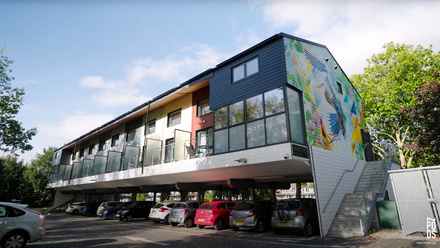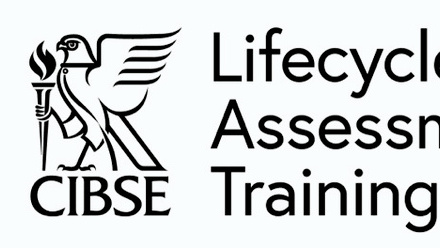Why aren't more building projects achieving sustainability goals?
So, what are the reasons for this and what barriers must designers and wider construction professionals overcome if this number is to increase?
Understanding the big picture
When RIBA produced its set of eight sustainable outcomes as part of its RIBA 2030 Climate Challenge, its objective was to show how sustainability can be introduced throughout a building project. Yet for designers in the working world, there's some disparity around how these outcomes are being prioritised.
In NBS' Sustainable Futures Report – a study aimed at understanding sustainability attitudes and protocols within the construction sector, we found that whilst 'Net zero operational carbon' ranked as the most important outcome, indicating that to the specifier, ensuring that the built asset performs sustainably for their client in the in-use phase of the project is of highest importance. Closely followed by 'good health and wellbeing', this further strengthens the picture that the in-use phase gets the most consideration.
Whilst there is no denying that each of RIBA's outcomes are essential to a wider sustainability goal in their own right, with our respondents some command more weight than others. These results could suggest that some designers are overlooking the impact that the initial design and specifying of construction projects and materials can have on the sustainability of projects. 'Net-zero embodied carbon' for example ranked mid place. In an industry that is responsible for circa 40% of all generated carbon emissions globally, having an equal focus on embodied carbon alongside operational carbon emissions could significantly reduce the sector's impact.
Sustainability in the building lifecycle
The reality of sustainable considerations can be explained when we look at where sustainability is happening within a building's lifecycle. Using RIBA's Plan of Work 2020 Overview as a guide, we can see differences between where designers believe sustainability should be considered and where it actually is considered.
The main difference can be seen at 'Stage 0 – strategic definition'. RIBA guidance states that this is the optimum stage to introduce sustainability measures. The feeling is reflected in the NBS study – 77% of respondents say that they would like to consider sustainability at this point, however in reality, just over a third (37%) in fact do. For the most effective sustainable outcomes on any project, consideration should be given as early as possible in the project and carried through every stage.
Stage 4 is typically where the written specification is finalised and it is great to see that sustainability is being considered equal to practice here, after all much of the embodied carbon sits within the materials chosen, often at this stage. However, 'Stage 5 – Manufacturing and construction', 41% believe sustainability should be considered here yet just 26% manage it. This result may be reflective of the contractor having more control at this stage but it is a concern given that at Stage 5, sustainability can be achieved through 'logistical means, materials and components, and through the management of supply chain partners'.
The influences
So, what influences the level of sustainability introduced into a project? Overwhelmingly, it is clear that personal views are a driving force. Nearly all (97%) said that sustainability is either important or quite important to them personally. Beliefs and values also topped the list of main sustainability drivers (87%). Interestingly, third on the list was legislation – a clear sign of the influence Government intervention can have on the wider industry. A lack of drive from the UK Government to prioritise sustainability in construction could be the reason for this sentiment. However, more recent efforts have begun to develop in the form of the 0% VAT cut on specific energy-saving products for home improvements. There is also a lot of discussion around the UK Green Building Council's Net Zero carbon roadmap. As with any legislation, the timescales involved to implement are a barrier and time is not a luxury within sustainability considerations. We must all consider sustainability within the core of everything we do.
Measurement and results
Measuring and reporting on sustainability metrics is an essential part of improving the picture. Promisingly, NBS found that a large chunk of companies are reporting on these metrics – 38% for most projects and 42% for some projects – showing that overall, companies are committed to sustainbility. Whilst it is encouraging that measurement is taking place, what are the results on the ground?
Disappointingly, the number of projects achieving sustainability has dropped. In 2014, as part of a similar study, 13% were achieving sustainability, all of the time. In 2021, the figure is less than half that (6%). Why this is the case may be due to how people define sustainability – as understanding has increased, people now recognise the nuances to achieve it.
Another reason could be the result of goal setting, or lack thereof. Seven out of ten have worked on projects with sustainability targets, at least some of the time. Just 14% had seen targets all of the time and only a quarter (25%) most of the time. Most worrying of all was that over half had not worked on a single net-zero project in the last twelve months. Given that there are important targets to reach within the next eight years, it is clear the industry will need to deliver marked improvements if it is to reach its goals.
Overcoming obstacles
Other barriers to sustainability success also exist. NBS' Sustainable Futures Report found that for over half of respondents (52%), a lack of client demand was the most common cause – just 1% more than the cost of achieving sustainability (51%). Another concern was the view that sustainable products are being 'value engineered' (38%), suggesting that a short-term focus remains with the upfront cost being considered above the lifetime value.
37% also stated that lack of government policy and regulation was another reason for a lack of take up of sustainable practices – another nod to the power that Government intervention can have on delivering change.
The responsibility of project roles also provided variation in how sustainability is perceived, with answers varying depending on the participant in question. For contractors, contractual risks were a main barrier to achieving sustainability. Given the on-going issues with supply chains and squeezed profit margins, it's clear that contractors remain cautious when it comes to needing specialist products which could cause projects to overrun. From a supplier standpoint, they are more likely to view sustainable products as being 'value-engineered' as a barrier, perhaps showing a need for further education with client and contract stakeholders.
From a client perspective, a lack of management commitment and a lack of sustainable performance information were marked as a major barrier – showing that more determined efforts are needed by suppliers to provide this information for their products, and by client organisations to make sustainability happen.
It is clear from the results that the construction industry has some hurdles to overcome if it is to deliver the levels of sustainability that are needed. Further goal setting and more direction around project responsibility are two areas in particular. Perceptions and myths around sustainability that are preventing progress also need to be addressed – specifically around cost and the wider understanding of carbon within a building's lifecycle.
As with building safety, end clients need to be educated on the subject of sustainability and as the professionals entrusted with the design process, they will surely take note of any recommendations from the architectural profession. What's important now is that we recognise these areas of improvement so that we are able to act and move the needle before it is too late.
This article first appeared in AT Journal issue 142





